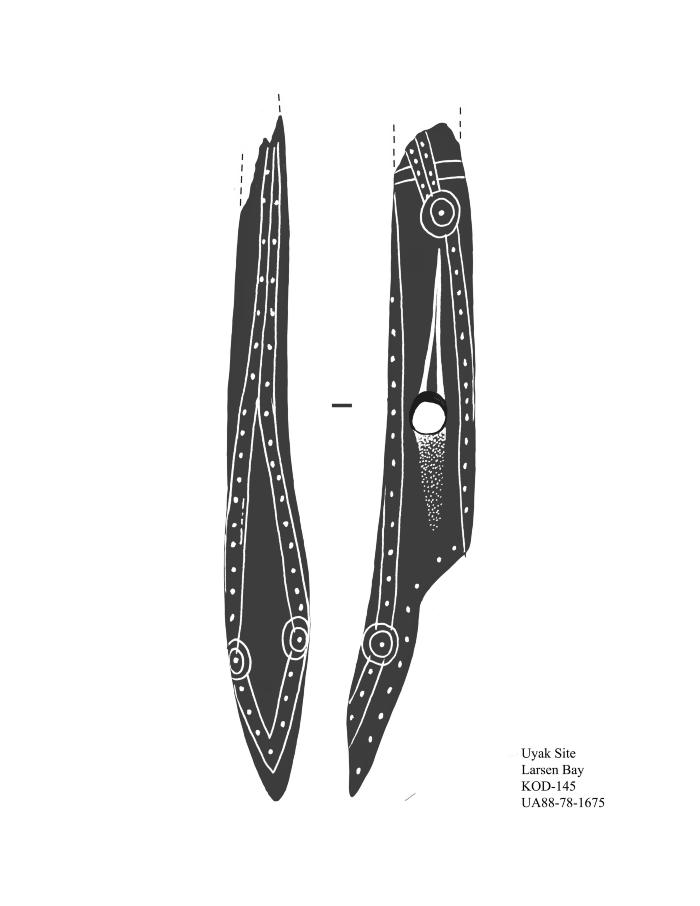Dot — Akarngasqangcuk

Small, round carved or painted dots are a common motif in Alutiiq graphic design. Artists use akarngasqangcuk, “tiny circles”, to embellish everything from hunting gear to clothing and ceremonial gear. Look carefully at the painted details of masks, or the embroidery along the cuff of a parka and you will find dotted borders, parallel bands of dots, and linear designs decorated with dots. Even some of the designs used in traditional tattoos and face painting featured small filled circles. Historic sources report that some women tattooed small round dots on their cheeks. Others tattooed a pair of dots between their breasts to stimulate lactation.
Why did Alutiiq people embellish their tools, clothing, and bodies with dots? First, in the Alutiiq world circles are a symbol of vision and awareness. They mimic the round shape of the human pupil and suggest sight. Vision is essential for hunting success and it is also important for safety. By seeing beyond the obvious people protect themselves and their families. They avoid dangerous people, situations, and spirits.
Second, dots can be interpreted as a passageway, a portal from one world or state to another. In an Alaska Peninsula community, Alutiiq girls preparing for their first menstrual seclusion had dots tattooed on their joints. Among the neighboring Yup’ik people these small, filled circular marks protected the soul inside each joint from disease, while imparting vision and helping the young woman transition into a new stage of life. They were a passageway from childhood to adult life.
Archaeologists note that dot motifs are an ancient element of Alutiiq art. They are present in incised drawings and petroglyphs more than 600 years old, and in the decoration of Ivory artifacts as much as 2,000 years old.
